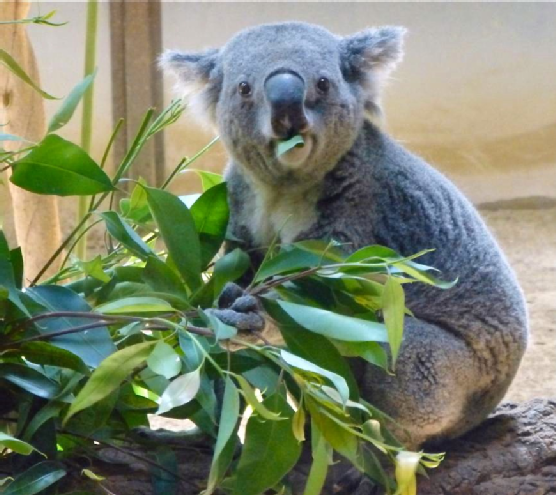Koalas’ aging population and cost to feed bedevil nation’s zookeepers – Article from Japan Times

KYODO
SEP 22, 2014
NAGOYA – Despite the popularity of koalas, the number of those kept in Japanese zoos has been more than halved from the mid-1990s peak as their population continues to grow old.
The difficulty of accommodating their fussy eating habits — they feed exclusively on eucalyptus leaves, which are expensive to grow in Japan — is also overshadowing their future in this country.
The first koalas arrived at Japanese zoos in 1984, with the number rising to nearly 100 by 1997, living in nine zoos. Since then, their numbers have continued to dwindle, falling to around 40 at present.
Most koalas in Japan are past breeding age, and mating opportunities for younger ones are declining amid concerns over the risks of inbreeding.
To inject fresh blood into the aging zoo population, an arrangement has been made to introduce six new koalas from Australia, the animal’s only native habitat. They will be the first new koalas to come to Japan in three years.
Masami Kurobe, an expert at Higashiyama Zoo and Botanical Gardens in Nagoya, said bringing in new koalas is the only remaining option to stem their decline in Japan. Still, he warned that successful mating may not be easy since koalas are known to be picky when it comes to partners.
“It’s unclear whether this will immediately lead to breeding,” Kurobe said.
Higashiyama Zoo, which cares for five koalas, is responsible for coordinating breeding for the species across zoos nationwide.
Koalas typically live about 10 years when kept in zoos. Threatened by creeping urban development, the loss of forests and car accidents, their population in the wild in Australia has also been shrinking. In 2012, the Australian government designated the koala as an endangered species.
When Japanese zoos keep koalas from Australia, they are required to grow their own eucalyptus trees to make sure a fresh supply of leaves is available at any time. Koalas are very choosy eaters — while they feed exclusively on eucalyptus, they often stop eating if continually served the same variety of leaves.
Higashiyama Zoo grows around 30 varieties of eucalyptus in four locations. Since chemicals can’t be used, bugs have to be removed by hand, bringing the annual cost of growing the eucalyptus to upwards of ¥50 million.
A single koala is more than three times as costly to feed as an elephant, and that rises to more than 17 times when compared with a lion. In fact, the cost of feeding a single koala each year eats up more of Nagoya’s municipal budget than the mayor’s annual pay, which is around ¥8 million.
The Okinawa Zoo and Museum had been keeping three koalas, but the last one died in 2010. Growing eucalyptus trees on the storm-prone subtropical island was a challenge that occupied much of the zookeepers’ time.
“Eucalyptus trees are vulnerable to typhoons and sea breezes as they fall over easily,” a keeper at the Okinawa Zoo recalled. “We were always busy running around.”
Last year, in an attempt to raise awareness about the difficulty of taking care of koalas, Higashiyama Zoo solicited online donations to help cover the feeding costs, collecting around ¥5 million. And yet the initiative drew criticism from people skeptical about keeping koalas at such an astronomical cost.
Kurobe framed the importance of keeping koalas at Japanese zoos as a matter of contingency planning for when the wild koala population is further threatened.
“It’s impossible to keep koalas without people who know a lot about their life and needed facilities,” he said. “The number of koalas in the wild in Australia is rapidly declining, so maybe, continuing to keep (koalas) in Japan will provide some insurance in case of extinction.”
**Note this article originally appears in Japan Times and can be read and referenced here: Japan Times Article ***
